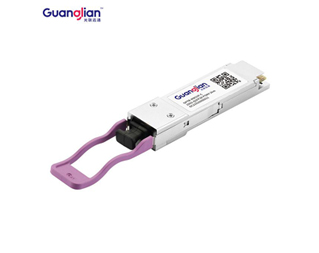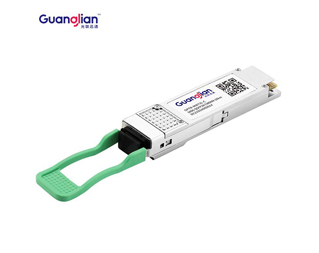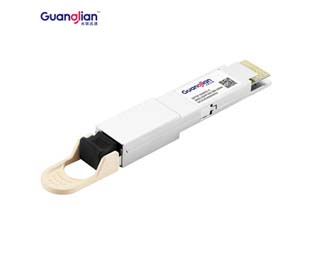There is no denying that the 100G data center optics market is accelerating which leads to the great demand for 100G optical transceivers. Among those various 100G modules, the 100G QSFP28 optical transceiver is the most preferred module for smaller size and lower power consumption. In the previous post, the QSFP28 SR4 transceiver has been described in detail. Here, we are going to introduce the QSFP28 LR4 optical transceiver module through the perspectives of definition, working principle, specifications, applications, and FAQs.
The QSFP28 LR4 is a hot-pluggable, four-channel, and full-duplex optical transceiver module designed for long-distance transmission up to 10km in the 100G Ethernet network with a working bandwidth of 1295nm to 1310nm. It provides an ideal solution for the super-large-scale data centers for the ever-lasting requirements for transmission distance. Simultaneously, the QSFP 100G LR4 modules are fully compliant with IEEE 802.3ba standard.
100GBASE-CFP2-LR4-10km Receiver Only Optical Transceiver Module
The 100G QSFP28 LR4 optical module converts four 25Gbps electrical signals into four LAN WDM optical signals and then multiplexes them into a single channel for 100G optical transmission. At the receiving end, the module reuses 100G light input demultiplexing into four LAN WDM optical signals and then converts them into four electrical channel signal output channels.
Enterprises and data centers are outgoing 10Gb/s and 40Gb/s networks for 100Gb/s connectivity. The QSFP 100G LR4 is in most cases the perfect fit for long-distance 100G direct connection and interconnection.
The method to get a direct 100G connection doesn’t differ too much from that of 10G/40G. Just plug two 100G QSFP28 LR4 modules into the corresponding ports on the switches, then connect them with LC fiber optic cables.
100GBASE-CFP2-LR4-10km Receiver Only Optical Transceiver Module
Q1: Will the QSFP 100G LR4 work if connected to a CFP 100G LR4 on the other end?
A: Yes, the QSFP 100G LR4 and CFP 100G LR4 modules are featured with the same 100G transmission rate and are working on the same wavelength (1310nm), so the QSFP 100G LR4 will work if connected to a CFP 100G LR4 module.
Q2: Is it necessary to clean a transceiver's optical connector? How to clean the QSFP28 LR4 100G transceiver?
A: Dust and contamination can accumulate on the transceiver's connectors and cause problems such as reducing the optic launch power. To ensure better connection, FS strongly recommends cleaning both connectors each time you disconnect and reconnect them. FS high-quality One-Push Fiber Optic Pen Cleaner for 1.25mm LC/MU Connector is the best cleaning choice for 100GBASE LR4 QSFP28 modules.
Q3: Will using the compatible QSFP 100G LR4 optics in my equipment negatively affect my manufacturer’s warranty?
A: No. Network equipment manufacturers do not require that you use only name-brand optics. In fact, when a product fault or defect occurs in the network, and the fault or defect is not attributable to the use of third-party optics, they will continue to provide support for the affected product under warranty or covered by their support program.
100G CFP vs QSFP28: Which One to Choose?
Jun. 11, 2022What Makes the Best Optical Transceiver Module?
May. 27, 2022200G QSFP56 Optical Module Knowledge Full Explanation
Apr. 25, 2022
100G CFP vs QSFP28: Which One to Choose?
Jun. 11, 2022
What Makes the Best Optical Transceiver Module?
May. 27, 2022Copyright ©Guanglian Xuntong Technology Group Co., Ltd. All Rights Reserved | Sitemap
